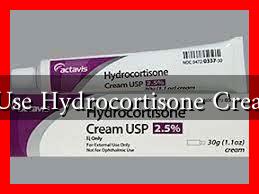-
Table of Contents
- How to Use Hydrocortisone Cream Safely
- Understanding Hydrocortisone Cream
- Common Uses of Hydrocortisone Cream
- How to Use Hydrocortisone Cream Safely
- 1. Consult a Healthcare Provider
- 2. Follow the Instructions
- 3. Monitor for Side Effects
- Case Studies and Statistics
- When to Seek Medical Help
- Conclusion
How to Use Hydrocortisone Cream Safely
Hydrocortisone cream is a topical corticosteroid that is commonly used to treat a variety of skin conditions, including eczema, psoriasis, and allergic reactions. While it can be highly effective in reducing inflammation and itching, improper use can lead to side effects and complications. This article will guide you on how to use hydrocortisone cream safely, ensuring you maximize its benefits while minimizing risks.
Understanding Hydrocortisone Cream
Hydrocortisone is a synthetic version of cortisol, a hormone produced by the adrenal glands. It works by suppressing the immune response and reducing inflammation. Hydrocortisone cream is available in various strengths, typically ranging from 0.5% to 2.5%, and can be purchased over-the-counter or prescribed by a healthcare provider.
Common Uses of Hydrocortisone Cream
Hydrocortisone cream is used to treat a variety of skin conditions, including:
- Eczema
- Psoriasis
- Allergic reactions
- Insect bites
- Rashes
According to the American Academy of Dermatology, hydrocortisone cream can effectively relieve symptoms such as redness, swelling, and itching associated with these conditions.
How to Use Hydrocortisone Cream Safely
To ensure safe and effective use of hydrocortisone cream, follow these guidelines:
1. Consult a Healthcare Provider
Before using hydrocortisone cream, it is essential to consult with a healthcare provider, especially if:
- You are pregnant or breastfeeding.
- You have a pre-existing medical condition.
- You are taking other medications.
Your healthcare provider can recommend the appropriate strength and duration of treatment based on your specific condition.
2. Follow the Instructions
Always read the label and follow the instructions provided. Here are some general application tips:
- Apply a thin layer of cream to the affected area.
- Gently rub it in until it is absorbed.
- Wash your hands after application to avoid spreading the cream to other areas.
It is crucial not to apply hydrocortisone cream to large areas of the body or to use it for extended periods without medical supervision.
3. Monitor for Side Effects
While hydrocortisone cream is generally safe, it can cause side effects, especially with prolonged use. Common side effects include:
- Skin thinning
- Stretch marks
- Increased hair growth
- Skin discoloration
If you experience severe side effects or signs of an allergic reaction, such as rash, itching, or difficulty breathing, seek medical attention immediately.
Case Studies and Statistics
A study published in the Journal of Dermatological Treatment found that patients using hydrocortisone cream for eczema reported a 70% improvement in symptoms within two weeks. However, the same study noted that 30% of participants experienced skin thinning after prolonged use, highlighting the importance of adhering to safety guidelines.
When to Seek Medical Help
If your condition does not improve after two weeks of using hydrocortisone cream, or if it worsens, consult your healthcare provider. Additionally, if you notice any unusual symptoms or side effects, it is crucial to seek medical advice.
Conclusion
Hydrocortisone cream can be an effective treatment for various skin conditions when used correctly. By consulting with a healthcare provider, following application instructions, and monitoring for side effects, you can safely incorporate this medication into your skincare routine. Remember, while hydrocortisone cream can provide relief, it is essential to use it responsibly to avoid potential complications. For more information on hydrocortisone and its uses, visit the American Academy of Dermatology.


